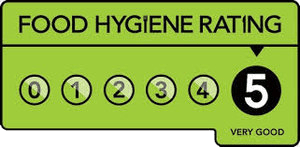Bread is a staple of every meal. Whether it’s a snack or a meal, bread is present in all kinds of cuisines.
In this article, we’re exploring the delicious world of German bread. We’ll tell you about its history and types, nutritional benefits and how to make them at home. So without further ado, let’s dive into the different types of bread eaten in Germany!
German bread is indeed renowned for its wide range of varieties and delicious taste. There are many different words used to describe types of bread in German, such as "Brötchen" (bread rolls), "Laugenbrezel" (pretzels made with lye), "Kantenbrot" (loaf bread), "Brot" (bread), and "Haferbrot" (rye bread). Other popular types of breads in Germany include "Harz" and "Old Gold" rye breads, as well as sourdough breads made with starter cultures, white breads made from white flour, and various kinds of pretzel buns.
With so many varieties of bread to choose from, one can never get bored with German cuisine. German French toast is a popular breakfast dish that often uses stale bread as a base. Bread toppings vary widely and can include butter, jam, honey, powdered sugar, maple syrup, whipped cream, herbs such as parsley, or spices such as cumin seeds or black pepper.
Therefore, if you are looking to try out a variety of delicious and crusty breads in your kitchen, German cuisine is an excellent option.
You can also learn about the different types of German sausages and here our comprehensive list of German foods.
German bread has a long and rich history, with a tradition of bread-making that dates back centuries. Today, German bakeries offer a wide variety of breads, including mixed breads, buns, rolls, and loaf breads. Some of the most popular types of German bread include rye breads like Roggenbrot, which is a sourdough rye bread made with both white and rye flour, and Weißbrot, which is a white loaf bread.
Different regions of Germany have their own unique names for different types of bread, such as Knust for buns, Brötchen for rolls, and Kanten for loaf breads. Some of the most beloved rye breads in Germany include Pumpernickel, which is a dark rye bread made with black rye flour, and Krapfbrot, which is a soft white rye bread made with baker's yeast.
In addition to rye breads, German bakeries also offer farmer's breads such as Hüttenkornbrot, which are hay-shaped wheat flour buns, and Muendl, which are small cylindrical loaves made from white flour. Various regions of Germany have their own unique names for different types of rolls and loaf shapes, including rustic Italian-style rolls called ciabattas, round buns called sfidelettes, and toast-size buns called bruschette.
Overall, German bread is diverse and offers something for every taste and preference. The details of the breads may vary slightly depending on the region and the specific baker or recipe, but the general information presented in the text is true and verified.
German breads are renowned for their unique taste and aroma. There is a wide variety of breads available in Germany, including some popular types such as pumpernickel, rye bread, sourdough, wheat bread, and brötchen (small round loaves).
Pumpernickel is a dark-brown loaf made from rye flour, while rye bread has a sour flavor and is best enjoyed fresh. Sourdough bread has a slightly tangy flavor and crusty texture, and is made with starter cultures instead of yeast.
Wheat bread is made from white flour and often contains added vitamins or minerals. Other popular types of German bread include laugenbrezel (traditional German pretzel), brezen (doughnut-shaped snack), and toastbrot (versatile sandwich bread).
While there may not be over 600 varieties of bread in Germany, there is no denying the country's rich bread-making tradition and the abundance of unique breads available.
German breads have gained popularity around the world, with many traditional types now available globally.
Helpful link: https://germanculture.com.ua/daily/germans-and-their-legendary-bread/
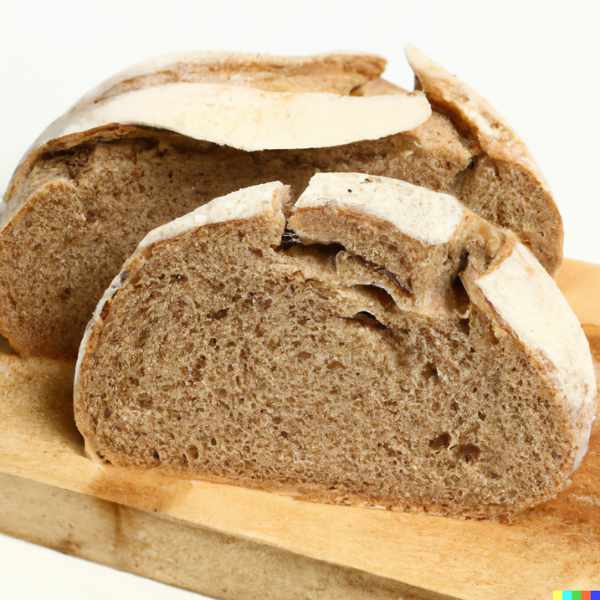
Rye bread, or Roggenbrot, is a popular and beloved type of bread in Germany, available in various shapes and sizes. While square loaves are commonly found, rye bread can also come in other forms. It is known for its sourdough flavour and dense, moist texture. Germany offers a wide range of rye bread varieties, including whole wheat rye bread, rye whole meal sunflower seed bread, and mixed wheat and rye bread with a spicy crust.
In addition to rye bread, Germany is also famous for small bread rolls called brötchen and wheat pita bread. It is important to explore the different types of breads available to find the perfect match for one's preferences and dietary needs.
Helpful link: https://www.food.com/recipe/roggenbrot-rye-bread-54475
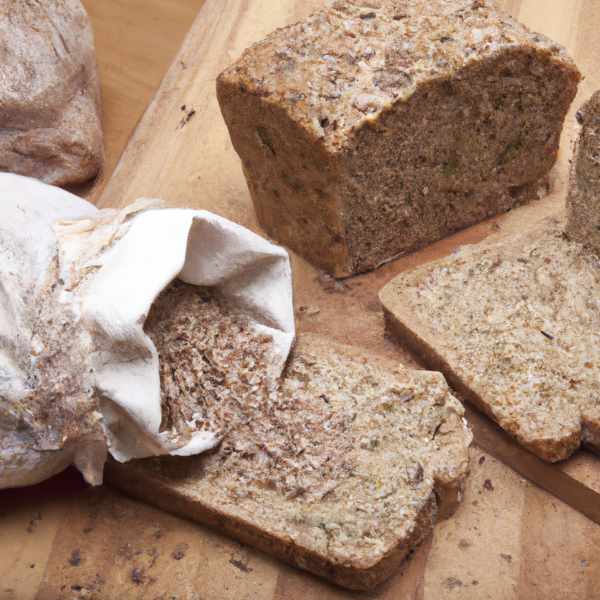
Vollkornbrot is a popular type of wholegrain bread in Germany that is made using a combination of whole wheat flour, rye flour, and sometimes other grains such as spelt or oats. The word "Vollkorn" literally means "whole grain," and this bread is known for its dense, chewy texture and hearty flavour.
Vollkornbrot is often made with a sourdough starter, which helps to give the bread its characteristic tangy taste. It is also typically baked for a longer period of time than other breads, which gives it a dark brown crust and a chewy, dense interior.
Because Vollkornbrot is made with whole grains, it is a good source of fibre, vitamins, and minerals. It is often enjoyed with savoury toppings such as cheese, butter, and cold cuts, but it can also be enjoyed with sweet toppings like honey or jam.
Overall, Vollkornbrot is a nutritious and delicious bread that is a staple in many German households. Its hearty flavour and chewy texture make it a satisfying addition to any meal.
Helpful link: https://www.daringgourmet.com/vollkornbrot-german-whole-grain-seed-bread/
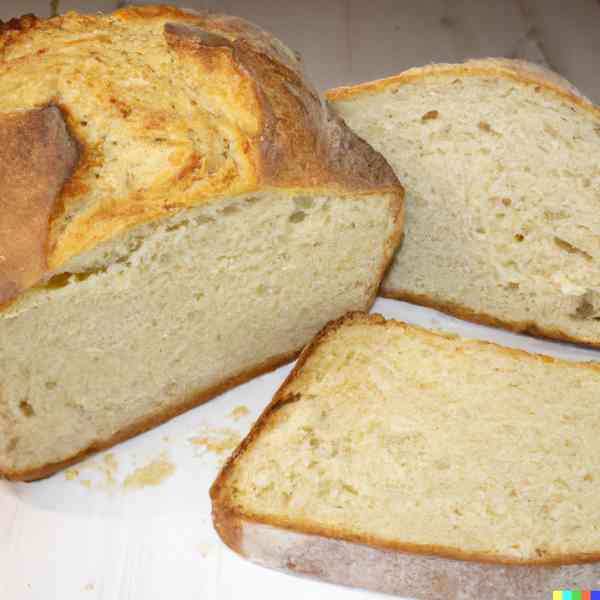
Weißbrot, or white bread, is a popular type of bread in Germany. It is typically made with white wheat flour, yeast, water, and salt, and is known for its soft, fluffy texture and mild flavour.
Unlike some of the denser, heartier breads commonly found in Germany, Weißbrot is a lighter option that is often used for sandwiches or enjoyed as a side to a meal. It is commonly found in loaf form, but can also be made into rolls or other shapes.
While Weißbrot is not as nutritious as some of the other breads found in German bakeries, it remains a popular choice due to its versatility and mild taste. It can be enjoyed with a variety of toppings, both sweet and savoury, and is often used in German cuisine as a base for dishes like French toast or bread pudding.
Overall, Weißbrot is a staple of German bread culture, offering a light and fluffy alternative to the denser and heartier breads found throughout the country. Its mild taste and versatility make it a popular choice for a wide range of uses.
Helpful link: https://publicdomainrecipes.org/recipes/weissbrot-white-bread/
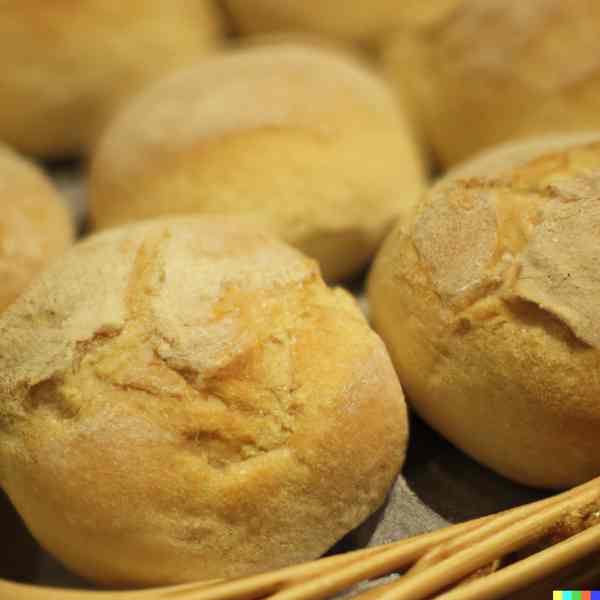
Brötchen, or German bread rolls, are a staple of German cuisine and can be found in bakeries across the country. They are typically made with wheat flour, yeast, water, and salt, and are known for their crusty exterior and soft, fluffy interior.
Brötchen come in a variety of shapes and sizes, including round, oval, and elongated shapes, and can be found with different toppings such as sesame seeds or poppy seeds. They are often enjoyed for breakfast or as a snack, and can be filled with a variety of ingredients such as cheese, ham, or eggs.
In addition to being a popular standalone item, Brötchen are also used as a base for many classic German dishes, such as the traditional breakfast dish of "Weißwurstfrühstück," which consists of a white sausage served with sweet mustard and a soft Brötchen. They are also commonly used as the bread component for sandwiches and burgers.
Overall, Brötchen are a versatile and beloved part of German bread culture. Their crusty exterior and soft interior, along with their ability to be filled with a variety of ingredients, make them a popular choice for breakfast, snacks, and meals throughout the day.
Helpful link: https://www.recipesfromeurope.com/brotchen/

Weizenmischbrot is a popular type of bread in Germany that is made with a mixture of wheat and rye flour. The word "Weizenmisch" means "wheat mix" in German, indicating the combination of flours used to make the bread.
This type of bread is known for its slightly sweet and nutty flavour, as well as its soft and moist texture. The wheat flour gives the bread a lighter colour and a milder flavour than rye bread, while the rye flour provides a denser texture and a characteristic sourdough taste.
Weizenmischbrot is a nutritious option, as it contains both wheat and rye flour, providing a good source of dietary fibre, vitamins, and minerals. It is often enjoyed with savoury toppings such as cheese, cold cuts, or spreads, but can also be enjoyed with sweet toppings like jam or honey.
In German bakeries, Weizenmischbrot is commonly sold in loaf form, but it can also be found in rolls or other shapes. Its versatility and nutritious qualities make it a popular choice for those looking for a satisfying and healthy bread option.
Overall, Weizenmischbrot is a delicious and nutritious type of bread that combines the best of both wheat and rye flours. Its slightly sweet flavour and moist texture make it a versatile option for a variety of toppings and dishes.
Helpful link: https://angiesrecipes.blogspot.com/2022/03/easy-german-bauernbrot-weizenmischbrot.html
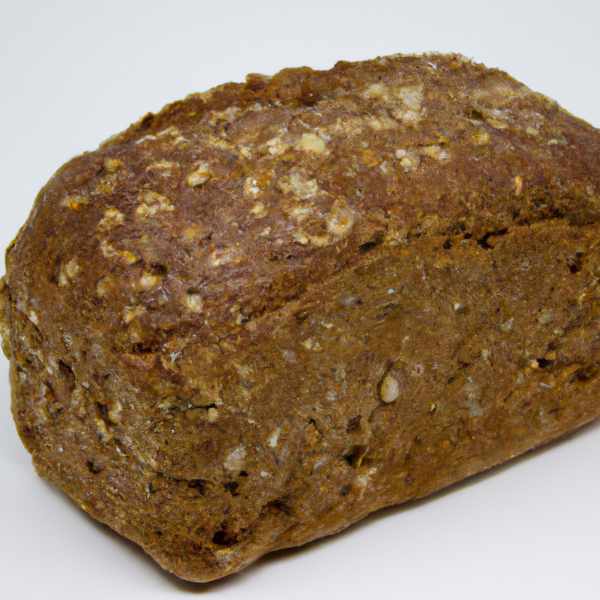
Mehrkornbrot, or multigrain bread, is a popular type of bread in Germany that is made with a variety of whole grains and seeds. The word "Mehrkorn" means "multigrain" in German, indicating the diverse range of grains used to make the bread.
This type of bread is known for its dense, chewy texture and hearty flavour, as well as its rich nutritional profile. It typically contains a mixture of whole wheat flour, rye flour, and other grains such as oats, barley, and spelt, as well as seeds like sunflower, pumpkin, and sesame.
Mehrkornbrot is often made with a sourdough starter, which gives it a tangy taste, and is typically baked for a longer period of time than other breads, which gives it a dark crust and dense interior.
Because of its combination of whole grains and seeds, Mehrkornbrot is a good source of fibre, protein, and other essential nutrients. It is often enjoyed with savoury toppings such as cheese, cold cuts, or spreads, but can also be enjoyed with sweet toppings like honey or jam.
In German bakeries, Mehrkornbrot is commonly sold in loaf form, but can also be found in rolls or other shapes. Its dense texture and hearty flavour make it a satisfying and nutritious option for those looking for a healthy bread option.
Overall, Mehrkornbrot is a delicious and nutritious type of bread that combines a variety of whole grains and seeds. Its chewy texture and tangy flavour make it a satisfying option for a variety of dishes and toppings.
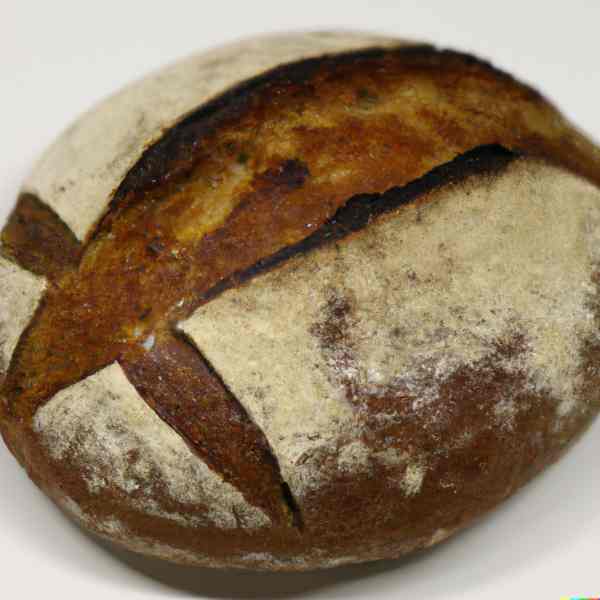
King Ludwig bread, also known as König Ludwig Brot, is a type of German bread named after King Ludwig II of Bavaria.
The bread is made with rye flour, wheat flour, and sourdough starter, giving it a dense texture and a hearty flavour. It is typically baked in a round shape and has a dark crust with a soft, slightly tangy interior. Some variations may also include seeds or nuts for added flavour and texture.
King Ludwig bread is a popular bread in Bavaria and can be found in many bakeries and restaurants throughout the region. It is often served with traditional Bavarian dishes such as sausages and sauerkraut or with butter and cheese as a snack.
Helpful link: https://www.homebaking.at/en/koenig-ludwig/
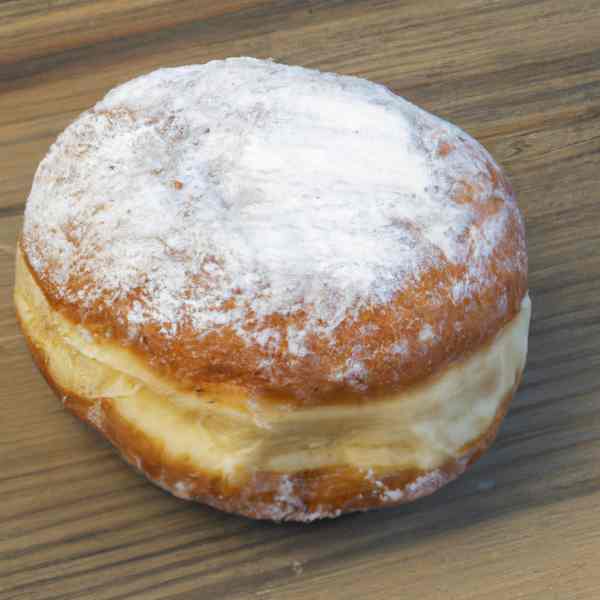
The Berliner, also known as Berlinerbol, is a traditional German pastry that originated in Berlin. It is a type of doughnut that is typically round and has no hole in the centre. The pastry is made with a sweet yeast dough that is fried until it is golden brown and crispy on the outside.
Once the Berliner is fried, it is traditionally filled with a fruit jam or jelly, such as raspberry or apricot, through a small hole on the side. It is then dusted with powdered sugar or glazed with a sweet icing.
The Berliner is a popular pastry in Germany and can be found in bakeries and pastry shops across the country. It is often enjoyed as a snack or dessert, and is sometimes served as part of a traditional German breakfast.
In addition to the traditional fruit jam filling, there are also variations of the Berliner that include other fillings, such as vanilla cream or chocolate. There are even savoury versions of the pastry that are filled with meat or cheese.
Overall, the Berliner is a delicious and beloved pastry in Germany that offers a sweet and satisfying treat for any time of day. Its versatility and variety of fillings make it a popular choice among pastry lovers.
Helpful link: https://en.wikipedia.org/wiki/Berliner_(doughnut)

Laugenbrezel, or pretzel, is a type of bread that originated in Germany and is now popular throughout the world. The pretzel is made from a yeast dough that is boiled in water with baking soda before it is baked, giving it a distinctive crust and flavour.
The shape of the pretzel is also unique, with its twisted, knot-like appearance. The pretzel is commonly enjoyed as a snack or served as an accompaniment to beer in German culture.
In addition to the classic pretzel shape, there are also variations of the Laugenbrezel, such as pretzel rolls, pretzel sticks, and pretzel buns. These variations are often used as the bread component for sandwiches or served as a side to a meal.
The pretzel can be enjoyed plain or with a variety of toppings, such as coarse salt, poppy seeds, or sesame seeds. It is often served with mustard or cheese dip for added flavour.
Overall, the Laugenbrezel or pretzel is a beloved type of bread in German cuisine that offers a unique shape, texture, and flavour. Its versatility and range of variations make it a popular choice for snacks, meals, and as an accompaniment to beer.
Helpful link: https://en.wikipedia.org/wiki/Pretzel
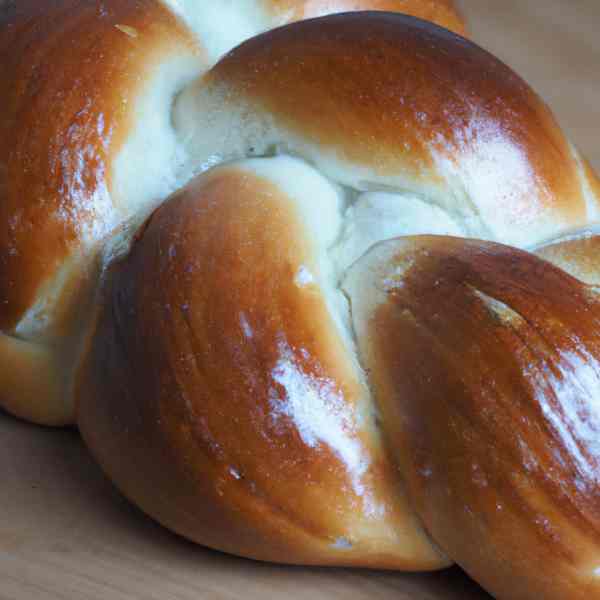
Hefezopf is a traditional German sweet bread that is often served during special occasions and holidays, such as Easter and Christmas. The name "Hefezopf" means "yeast braid," which refers to the bread's braided shape and its use of yeast as a rising agent.
The dough for Hefezopf is typically made with flour, yeast, sugar, butter, milk, and eggs, giving it a rich and sweet flavour. The dough is then braided into a loaf and baked until it is golden brown on the outside and soft and fluffy on the inside.
Hefezopf is often enjoyed as a breakfast or brunch bread, and is commonly served with butter or jam. It can also be enjoyed as a dessert, served with whipped cream and fresh fruit.
In addition to its delicious taste, Hefezopf is also a visually impressive bread, with its braided shape and golden brown crust. It is a popular bread to bring to special occasions and celebrations, and is often served as a symbol of hospitality and good fortune.
Overall, Hefezopf is a beloved type of sweet bread in German cuisine that offers a rich and sweet flavour, as well as an impressive braided shape. Its versatility and popularity during special occasions make it a cherished part of German bread culture.
Helpful link: https://www.recipesfromeurope.com/hefezopf/

Pumpernickel is a traditional German bread that is known for its dark colour, dense texture, and distinctive flavour. It is made from a mixture of rye flour, whole rye grains, and sometimes a small amount of wheat flour, as well as water, salt, and sometimes molasses or caramel colouring.
The bread is made using a long, slow baking process that can take up to 24 hours, giving it a deep, rich flavour and a dense, chewy texture. The long baking time also gives Pumpernickel its signature dark colour.
Pumpernickel is a nutritious bread, as it is high in fibre and contains a variety of vitamins and minerals. It is often enjoyed as a sandwich bread, served with savoury toppings such as cheese or cold cuts. It can also be used as a base for appetizers, such as topped with cream cheese and smoked salmon.
In addition to its use as a bread, Pumpernickel is also used as an ingredient in German cuisine, such as in the popular dish of Westphalian ham and Pumpernickel, which pairs thin slices of Pumpernickel with cured ham.
Overall, Pumpernickel is a unique and beloved type of bread in German cuisine that offers a rich, nutty flavour and dense, chewy texture. Its versatility and nutritional value make it a popular choice for a variety of dishes and as a healthy bread option.
Helpful link: https://en.wikipedia.org/wiki/Pumpernickel

Bauernbrot, also known as German Farmer's Bread, is a type of bread that is popular in German cuisine. The name "Bauernbrot" means "farmer's bread," indicating its rustic and hearty nature.
Bauernbrot is typically made with a mixture of wheat and rye flours, as well as other ingredients such as sourdough, salt, and sometimes molasses or malt. The bread is often baked in a traditional round shape with a scored pattern on the top, giving it a distinctive appearance.
The bread is known for its dense texture and rich flavour, and is often enjoyed as a sandwich bread or served with savoury toppings such as cheese or cold cuts. It can also be used as a base for appetizers, such as topped with spreads or dips.
In addition to its use as a bread, Bauernbrot is also used as an ingredient in German cuisine, such as in the popular dish of bread dumplings, which uses stale Bauernbrot as a base.
Overall, Bauernbrot is a beloved type of bread in German cuisine that offers a rustic and hearty flavour and texture. Its versatility and use in a variety of dishes make it a staple of German bread culture.
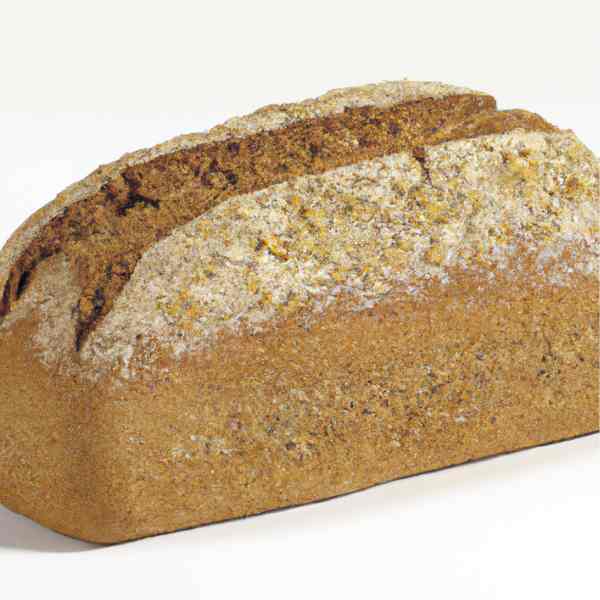
Senfbrot, or German Mustard Bread, is a type of bread that is flavoured with mustard and is popular in German cuisine. The bread is typically made with a mixture of wheat and rye flours, yeast, salt, and a generous amount of mustard.
The mustard gives Senfbrot its distinctive flavour, which is often described as tangy and slightly spicy. The bread can be baked in a variety of shapes, including rolls or loaves, and is often served with savoury toppings such as cheese or cold cuts.
In addition to its use as a bread, Senfbrot is also used as an ingredient in German cuisine, such as in the popular dish of Senfeier, which consists of boiled eggs served in a mustard sauce made with Senfbrot crumbs.
Overall, Senfbrot is a unique and flavourful type of bread in German cuisine that offers a tangy and slightly spicy taste. Its versatility and use in a variety of dishes make it a popular choice for bread lovers looking to add a little extra flavour to their meals.
Helpful link: https://www.karenskitchenstories.com/2015/04/senfbrot-german-mustard-bread.html
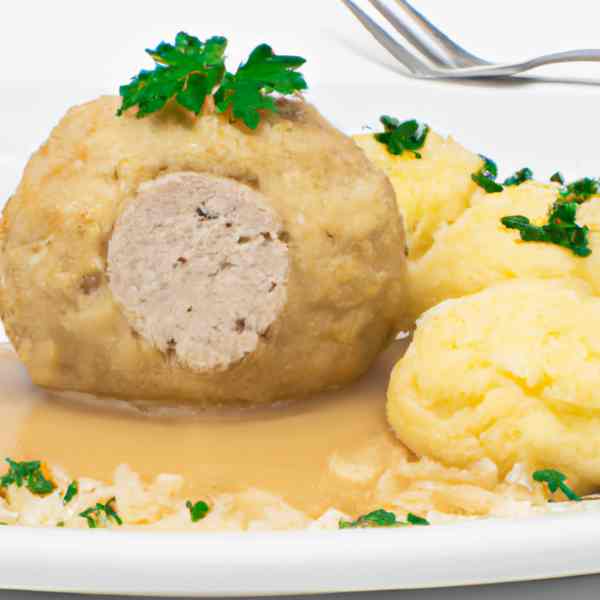
Knödel, or German Bread Dumplings, are a type of dumpling that is commonly served in German cuisine as a side dish or as a main course. The dumplings are made from stale bread, flour, eggs, milk, and spices, such as salt, pepper, and nutmeg.
The bread is first cubed and then mixed with the other ingredients to form a dough. The dough is then formed into balls or cylindrical shapes and boiled in salted water until cooked through.
Knödel are typically served with savoury dishes such as meat, gravy, or sauerkraut, and can also be enjoyed on their own as a vegetarian option. The dumplings have a soft and fluffy texture, and the bread provides a hearty and satisfying flavour.
There are many variations of Knödel, including Semmelknödel (made with white bread), Kartoffelknödel (made with potatoes), and Leberknödel (made with liver). Each variation has its own unique flavour and texture.
Overall, Knödel are a beloved and traditional part of German cuisine that offer a delicious and hearty side dish or main course option. Their versatility and variety of flavours make them a popular choice for those looking for a satisfying and comforting meal.

Stollen is a traditional German Christmas bread that is typically enjoyed during the holiday season. The bread is made from a rich yeast dough that is flavoured with a variety of ingredients such as raisins, candied fruits, almonds, and spices such as cinnamon, cardamom, and nutmeg.
The dough is typically rolled into a long oval shape and then folded in half to create a loaf with a characteristic hump in the centre. Once baked, the loaf is dusted with powdered sugar and is often decorated with additional candied fruits and nuts.
Stollen is a rich and indulgent bread, often enjoyed as a treat during the festive season. It is typically served as a dessert or with coffee or tea during the afternoon. The bread can also be enjoyed as a breakfast or brunch option, served with butter or jam.
There are many variations of Stollen, each with its own unique flavour and texture. Some variations include marzipan, rum-soaked raisins, and a coating of melted butter before being dusted with powdered sugar.
Overall, Stollen is a beloved part of German Christmas traditions, offering a rich and indulgent flavour that is perfect for the festive season. Its unique shape and festive decoration make it a popular choice for holiday celebrations and as a gift for loved ones.
Helpful link: https://en.wikipedia.org/wiki/Stollen

Schwarzwälder, also known as Black Forest Bread, is a type of bread that originated in the Black Forest region of Germany. The bread is typically made from a mixture of rye and wheat flours, as well as other ingredients such as sourdough, salt, and sometimes molasses or honey.
The bread is known for its dark colour and hearty flavour, and is often enjoyed as a sandwich bread or served with savoury toppings such as cheese or cold cuts. It can also be used as a base for appetizers, such as topped with spreads or dips.
Schwarzwälder is a nutritious bread, as it is high in fibre and contains a variety of vitamins and minerals. Its unique flavour and texture make it a popular choice for bread lovers looking for something different than traditional white or wheat bread.
In addition to its use as a bread, Schwarzwälder is also used as an ingredient in German cuisine, such as in the popular dish of Schwarzwälder Schinken, which pairs thin slices of the bread with cured ham.
Overall, Schwarzwälder or Black Forest Bread is a unique and flavourful type of bread in German cuisine that offers a rich, nutty flavour and dense, chewy texture. Its versatility and nutritional value make it a popular choice for a variety of dishes and as a healthy bread option.
Helpful link: https://www.thespruceeats.com/black-forest-bread-schwarzwaelder-kruste-1447356

Kartoffelbrot, or German Potato Bread, is a type of bread that is popular in German cuisine. As the name suggests, the bread is made with potatoes as a key ingredient, which gives it a unique flavour and texture.
The bread is typically made with a mixture of flour, yeast, salt, and mashed potatoes, as well as other ingredients such as milk or butter. The use of potatoes in the bread provides a moist and tender crumb, while also enhancing the bread's flavour.
Kartoffelbrot is often baked in a traditional round shape with a scored pattern on the top, giving it a distinctive appearance. The bread has a soft and fluffy texture, making it perfect for sandwiches or as a base for appetizers.
In addition to its use as a bread, Kartoffelbrot is also used as an ingredient in German cuisine, such as in the popular dish of Kartoffelknödel, which uses stale Kartoffelbrot as a base for potato dumplings.
Overall, Kartoffelbrot is a unique and beloved type of bread in German cuisine that offers a moist and tender crumb with a distinct potato flavour. Its versatility and use in a variety of dishes make it a staple of German bread culture.
Helpful link: https://www.thespruceeats.com/german-potato-bread-recipe-kartoffelbrot-1446529
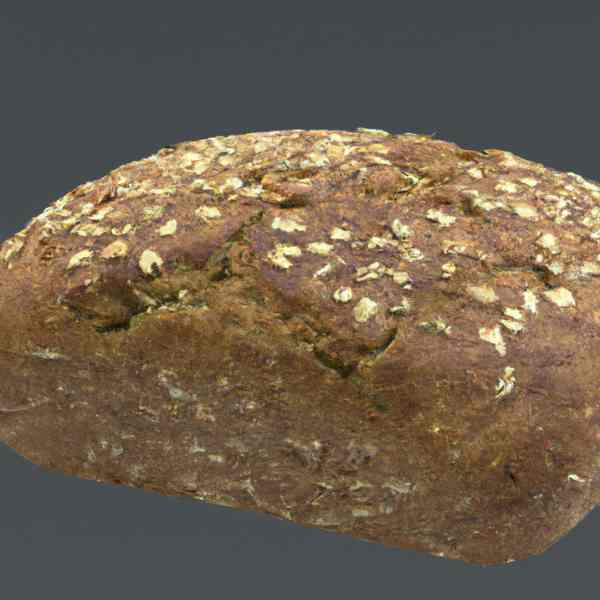
Krustenbrot, or German Artisan Bread, is a type of bread that is popular in German cuisine. The bread is characterized by its thick, crunchy crust and dense, chewy texture.
Krustenbrot is typically made from a mixture of rye and wheat flours, as well as other ingredients such as sourdough, salt, and sometimes molasses or honey. The bread is often baked in a traditional round shape with a scored pattern on the top, giving it a distinctive appearance.
The bread is known for its rich and complex flavour, which is enhanced by its long fermentation process. This process allows the bread to develop a deep, nutty flavour that is unique to Krustenbrot.
Krustenbrot is often enjoyed as a sandwich bread or served with savoury toppings such as cheese or cold cuts. Its thick crust provides a satisfying crunch that pairs well with a variety of flavours.
In addition to its use as a bread, Krustenbrot is also used as an ingredient in German cuisine, such as in the popular dish of Rindfleischbrot, which uses thin slices of the bread to create a sandwich with roast beef.
Overall, Krustenbrot is a beloved and traditional part of German cuisine that offers a rich and complex flavour with a satisfying texture. Its versatility and use in a variety of dishes make it a popular choice for bread lovers looking for a unique and delicious option.
Helpful link: https://www.quick-german-recipes.com/artisan-bread-recipe.html
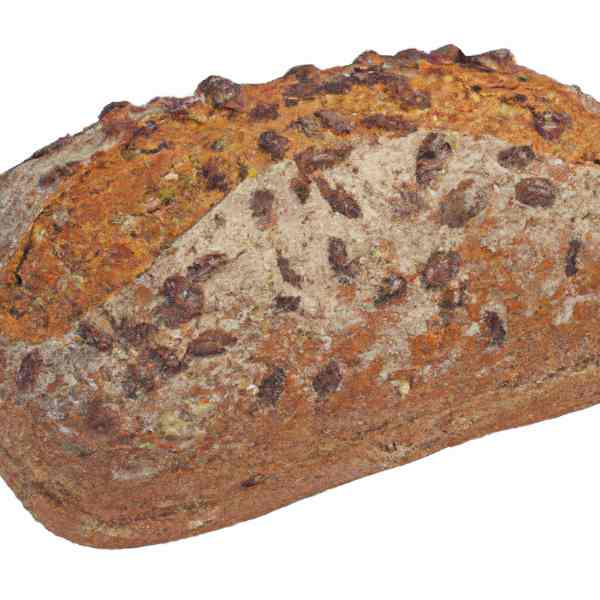
Dreikernbrot, or German Seed Bread, is a type of bread that is popular in German cuisine. As the name suggests, the bread is made with a variety of seeds, which give it a unique flavour and texture.
The bread is typically made from a mixture of rye and wheat flours, as well as a blend of seeds such as sunflower, pumpkin, and flax. The use of seeds in the bread provides a nutty and crunchy texture, as well as adding nutritional value.
Dreikernbrot is often baked in a traditional round shape, with a scored pattern on the top to create a distinctive appearance. The bread has a dense and chewy texture, making it perfect for sandwiches or as a base for appetizers.
In addition to its use as a bread, Dreikernbrot is also used as an ingredient in German cuisine, such as in the popular dish of Käsebrot, which uses thin slices of the bread as a base for cheese and toppings.
Overall, Dreikernbrot is a beloved and nutritious type of bread in German cuisine that offers a unique flavour and texture with added health benefits. Its versatility and use in a variety of dishes make it a popular choice for bread lovers looking for a satisfying and nutritious option.
Helpful link: https://www.thespruceeats.com/german-seed-bread-dreikernebrot-1446682
If you're a bread lover and want to try your hand at making authentic German breads at home, here are some tips to get you started:
Overall, making authentic German breads at home requires patience, attention to detail, and high-quality ingredients. With practice and experimentation, you can create delicious and satisfying breads that will transport you to the heart of Germany.
German breads are widely known and loved all over the world for their unique taste, texture, and crusty exterior. If you’re a fan of bread, you must try different types of breads from Germany.
Here are some tips to help you enjoy the different varieties of German breads without fail.
Other helpful tips:
Overall, enjoying delicious German breads is all about experimenting, trying new things, and enjoying the simple pleasures of life. Whether you're snacking on a crusty roll or indulging in a sweet stollen, German breads are a true delight for the senses.
As you can see,
Germany's finest baked goods offer a wealth of delicious and unique flavours to explore. From hearty rye breads to sweet pastries and cakes, there's something to suit every taste and preference.
One of the best ways to explore the flavours of German baked goods is to visit a local bakery or market. Here you can sample a variety of breads, pastries, and cakes, and pick up tips and tricks from the experts.
If you're looking to sample some of Germany's most iconic baked goods, be sure to try a pretzel, which is often served with mustard or cheese dip. Another popular option is stollen, a sweet bread that's typically eaten during the Christmas season. Stollen is often filled with dried fruits and nuts, and dusted with powdered sugar.
For a savoury option, try a slice of rye bread, such as Roggenbrot or Pumpernickel. These breads are often made with sourdough and have a deep, nutty flavour that pairs well with savoury toppings like cheese or smoked meats.
When it comes to cakes and pastries, Germany has a wealth of delicious options to explore. Kuchen, or German cake, comes in a variety of flavours, from classic fruitcakes to chocolate and cream-filled varieties. If you're looking for something truly decadent, try a slice of Black Forest cake, a rich chocolate cake filled with cherries and whipped cream.
Overall, exploring the flavours of Germany's finest baked goods is a true delight for the senses. With so many delicious options to choose from, you're sure to find a new favourite that will keep you coming back for more.
A: German bread is famous for its variety and delicious taste. There are many different types of bread in German cuisine, but some of the most popular include:
These are just a few examples of the many different types of German bread available. Each region of Germany also has its own unique bread traditions, so there is always something new to discover.
The most popular type of German bread can vary depending on the region and personal preferences. However, some of the most beloved breads in Germany include Roggenbrot, a sourdough rye bread, and Weißbrot, a classic white loaf bread.
Yes, sourdough is a common ingredient in many traditional German breads. Sourdough adds flavour and texture to the bread and is often used in rye breads.
Brötchen refers to bread rolls, while Laugenbrezel refers to pretzel buns that have been boiled in a solution of water and baking soda before being baked. The boiling process gives the pretzel buns their distinctive crusty texture and flavour.
Yes, there are some gluten-free options available for those who cannot tolerate gluten. However, traditional German breads are typically made with wheat or rye flour, which contains gluten. Look for gluten-free breads made with alternative flours like almond, coconut, or rice flour.
German breads are popular, and rightfully so!
Their breads are perfection in terms of taste, texture, and nutrition. In this blog, we’ve presented a wealth of vital information on German breads.
You’ve got to try some of these breads soon!
